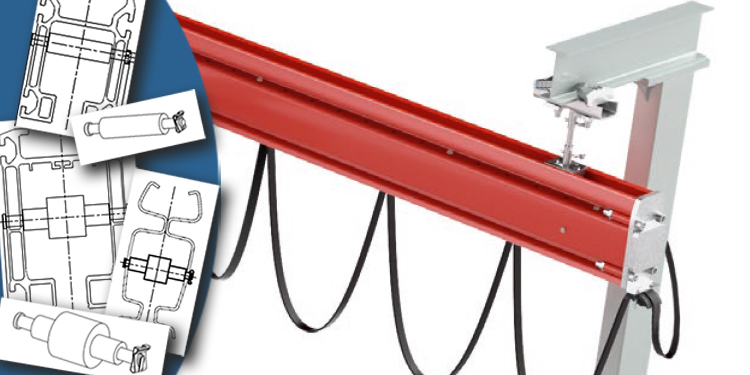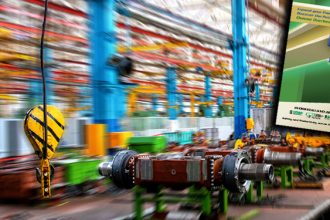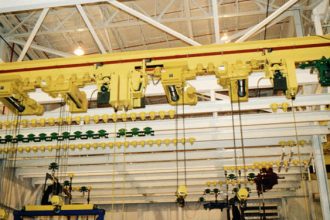Why End Stops Are An Important Safety Feature On Monorail Tracks

All good things must come to an end, and that includes the rails of overhead fixed monorail — constructed with either patented track or enclosed track — upon which carriers, end trucks or trolleys travel. To ensure that a load carrying device suspended from the track does not travel off the end of a run or spur as it moves the load horizontally, vertically and laterally, monorail manufacturers integrate safety end stops. These significantly reduce the risk of an accident or injury caused by the overhead load and its carrier falling off the end of a track. Additionally, end stops can be used to segregate individual cranes and trolleys along different sections of the same rail, preventing a collision and restricting their movement to a specific work area within a facility.
Different from an end cap — which is used to close off the open end of a rail — end stops are typically positioned at the farthest point that a load and its carrier can travel. This is often a few inches (or more) away from the end of the track. Offered in a variety of configurations and materials by different monorail manufacturers, the majority of end stops are constructed with a layer of material, usually rubber or polymer, with a steel rod or bolt embedded inside.
The cushioning material safely absorbs the impact of the trolley wheels should the payload travel beyond its targeted positioning location without damaging the equipment or the load. End stops for enclosed track monorail commonly feature a bolt integrated into the device that is anchored to the track with a corresponding nut; patented track monorail end stops can be secured either by welding or bolting the device to the rail. (Some manufacturers offer a combination end cap/end stop that both deflects an impact as well as seals the open end of the track.)
Standards published by the Monorail Manufacturers Association (MMA) of MHI for both types of monorails include sections on end stops.
- ANSI MH27.1 Patented Track Underhung Cranes and Monorail Systems, section 6(g) notes: “Stops shall be provided at the ends of the carrier and crane travel. Stops or forks shall be provided at open ends of tracks; such as interlocking cranes, track openers and track switches. Stops shall be provided to resist impact forces of a fully loaded carrier or crane traveling at a normal walking speed or at 50% of the rated full load speed, if the carrier or crane is motor driven.
- ANSI MH27.2 Enclosed Track Underhung Cranes and Monorail Systems, section 6(e) states: “Stops shall be provided at the ends of the trolley (carrier) and crane travel. Stops or forks shall be provided at open ends of tracks, such as: interlocking cranes, track openers and track switches. Stops shall be provided to resist impact forces of a fully loaded trolley (carrier) or crane traveling at a normal walking speed or at 50% of the rated full load speed, if the trolley (carrier) or crane is motor driven.”
Although end stops are designed to impede a carrier or trolley’s travel, they are not to be used solely for that purpose. Rather, the operator should always maintain control of the load as it is transported overhead and stop its travel at the designated positioning location either manually or with the controller on a powered system. End stops are intended to serve as a failsafe to prevent accidents or injuries should the load travel past that target location; repeatedly using them to stop a load will likely reduce their usable lifespan and potentially compromise the safety of the operation. Inspect all end stops — along with the rest of the monorail system’s components — at regular intervals to verify that each is securely fastened and that there are no signs of damage, such as dents, cracks, or other deformations.
Looking for more information about how a monorail system might benefit your operation? The members of the Monorail Manufacturers Association (MMA) are the industry’s leading suppliers of overhead monorail systems. The group offers a variety of resources—including a product certification program, guidelines for specifying automated electrified monorail systems, recommended practices for workstation cranes and patented track systems, specifications for both patented track and enclosed track underhung crane and monorail systems, and more — via its website at www.MHI.org/MMA.



